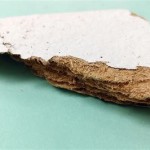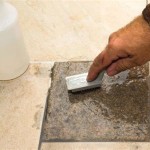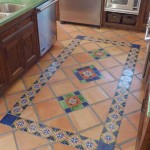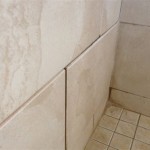Can I Put Backsplash Tile On Drywall Ceiling?
The question of whether backsplash tile can be installed on a drywall ceiling is a common one, particularly when considering aesthetic enhancements or moisture-resistant solutions for areas like bathrooms and kitchens. While aesthetically appealing and functionally beneficial in certain applications, the feasibility and longevity of this type of installation are dependent on several factors related to the properties of both the tile and the drywall, as well as proper installation techniques. A careful evaluation of these elements is crucial to ensure a successful outcome, preventing potential issues like tile detachment and structural damage.
Drywall, also known as gypsum board, is a widely used construction material for interior walls and ceilings. It consists of a gypsum core sandwiched between two layers of paper. This composition makes it lightweight, relatively inexpensive, and easy to install. However, drywall is not inherently designed to bear heavy loads or withstand significant moisture exposure. Its primary function is to provide a smooth surface for painting or wallpapering, and to contribute to fire resistance and sound insulation. The structural integrity of drywall relies heavily on its attachment to framing members, such as studs or joists. Applying significant weight, such as that of tile and its associated adhesive, can compromise this integrity, especially over time.
Backsplash tile, on the other hand, is designed for vertical applications, primarily in areas prone to moisture and splatters. It is available in a wide range of materials, including ceramic, porcelain, glass, and stone. Each material possesses different properties in terms of weight, water resistance, and installation requirements. Tile is generally adhered to a substrate using thin-set mortar, a cement-based adhesive that provides a strong bond. However, the success of this bond depends not only on the quality of the mortar but also on the ability of the substrate to support the weight of the tile and resist moisture penetration.
The compatibility of these two materials – drywall and backsplash tile – for ceiling applications is therefore questionable in many circumstances. The weight of the tile, combined with the potentially compromising effects of moisture, can lead to significant problems. Before undertaking such a project, a thorough understanding of the risks and necessary precautions is essential.
Weight Considerations
The weight of the tile is a primary concern when considering installation on a drywall ceiling. Different tile materials have varying densities, which directly impacts their weight per square foot. For example, natural stone tiles like slate or granite are significantly heavier than ceramic or glass tiles. The drywall must be capable of supporting this added weight without sagging or detaching from the ceiling joists. Standard half-inch drywall is typically rated to support a limited amount of weight, and exceeding this limit can lead to structural failure.
Furthermore, the weight of the thin-set mortar used to adhere the tile must also be factored into the total load. Thin-set mortar, when wet, adds considerable weight, and even after drying, it contributes to the overall stress on the drywall. Selecting a lightweight thin-set can help mitigate this issue, but it is crucial to verify that the chosen adhesive is suitable for both the tile material and the drywall substrate.
The spacing of the ceiling joists also plays a critical role in determining the weight-bearing capacity of the drywall. Closely spaced joists provide more support and can handle heavier loads compared to joists that are spaced further apart. It may be necessary to reinforce the existing joists or add additional support to accommodate the weight of the tile, particularly if the joists are spaced widely or if the tile is particularly heavy. This reinforcement can involve adding additional joists, sistering existing joists with new lumber, or installing bracing to distribute the load more effectively.
Before proceeding with installation, calculating the total weight of the tile and adhesive per square foot and comparing it to the weight-bearing capacity of the drywall is essential. Consulting with a structural engineer or a qualified contractor can provide valuable insights and ensure that the ceiling is adequately supported.
Moisture Resistance and Vapor Barriers
Moisture is another critical factor to consider when installing backsplash tile on a drywall ceiling, especially in areas prone to humidity like bathrooms. Drywall is susceptible to moisture damage, which can lead to softening, warping, and mold growth. The presence of tile, even with grout, does not guarantee complete protection against moisture penetration. Water can seep through grout lines and cracks, eventually reaching the drywall and causing deterioration.
To mitigate moisture-related issues, the use of a waterproof membrane or vapor barrier is strongly recommended. This membrane acts as a barrier between the tile and the drywall, preventing moisture from reaching the substrate. Several types of waterproof membranes are available, including liquid-applied membranes, sheet membranes, and self-adhesive membranes. The choice of membrane depends on the specific application and the level of moisture exposure expected.
Proper ventilation is equally important in preventing moisture buildup. Ensuring adequate airflow in the room helps to dry out any moisture that may penetrate the tile and grout, preventing it from lingering and damaging the drywall. Exhaust fans in bathrooms should be properly sized and maintained to effectively remove moisture-laden air. In kitchens, range hoods should be used to vent steam and cooking fumes to the outside.
Furthermore, the type of grout used can influence the extent of moisture penetration. Epoxy grout is generally more water-resistant than cement-based grout, making it a better choice for applications in high-moisture areas. Regularly sealing grout lines can also help to maintain their water-resistance and prevent moisture from seeping through.
Surface Preparation and Adhesion
Proper surface preparation is crucial for ensuring a strong and lasting bond between the tile and the drywall. The drywall surface must be clean, dry, and free of any dust, dirt, or grease. Any imperfections, such as holes or cracks, should be repaired before proceeding with installation. A primer may also be necessary to improve adhesion and create a more uniform surface.
Priming the drywall surface can enhance the bond between the thin-set mortar and the substrate. A suitable primer should be compatible with both the drywall and the adhesive. It should also be formulated to resist moisture penetration and prevent the formation of mold and mildew. Applying a coat of primer according to the manufacturer's instructions ensures a more secure and durable installation.
The choice of thin-set mortar is also critical for achieving proper adhesion. Different types of thin-set are designed for specific tile materials and applications. Using the wrong type of thin-set can result in poor adhesion and tile detachment. It is essential to select a thin-set that is specifically formulated for use with the chosen tile material and the drywall substrate.
The application technique for the thin-set mortar also plays a significant role in ensuring a strong bond. The mortar should be applied evenly to both the drywall surface and the back of the tile, using a notched trowel to create ridges that promote adhesion. The tile should be firmly pressed into the mortar, and any excess mortar should be removed immediately. Following the manufacturer's instructions for the thin-set mortar is crucial for achieving optimal results.
In summary, while installing backsplash tile on a drywall ceiling is possible, it requires careful consideration of weight, moisture, and adhesion factors. Reinforcing the ceiling structure, using a waterproof membrane, and properly preparing the drywall surface are essential steps for ensuring a successful and long-lasting installation. Consulting with professionals and adhering to best practices can help mitigate potential risks and achieve the desired aesthetic outcome.

Going Up Backsplash Tile That Goes To The Ceiling

Going Up Backsplash Tile That Goes To The Ceiling

Can You Tile Over Drywall Master Building Materials Blog

Uneven Ceiling Backsplash

Can Backsplash Go Above Cabinets

Where Should My Kitchen Backsplash Start And End Decorative Ceiling Tiles Inc

The Tile Journal Of Hamilton In Woodstock Ga

Where To Start And Stop Your Backsplash

How To Tile A Ceiling Tips And Guidelines Howstuffworks

Tiling Around A Window Centsational Style
Related Posts








